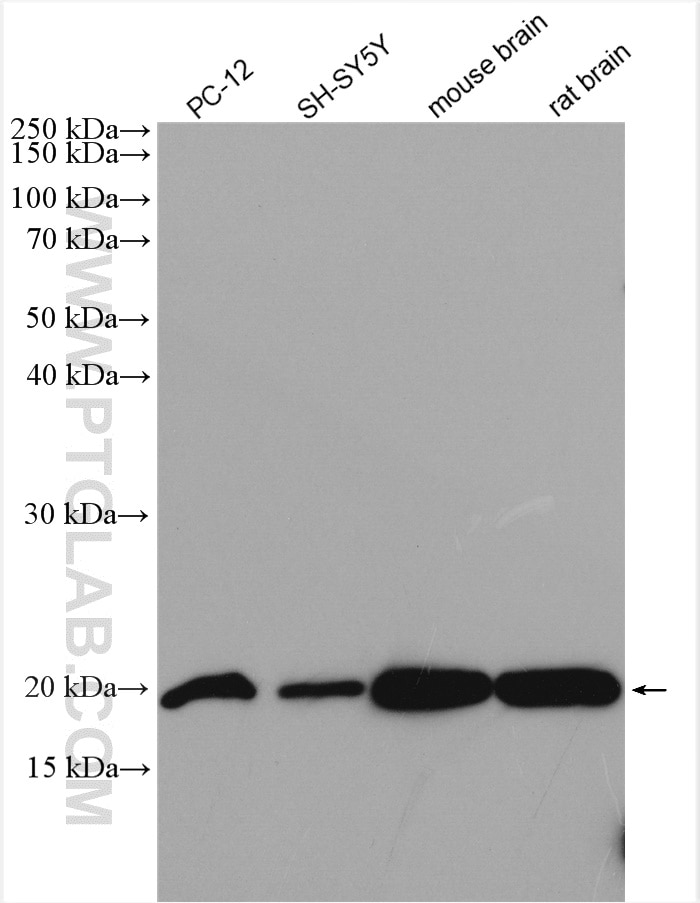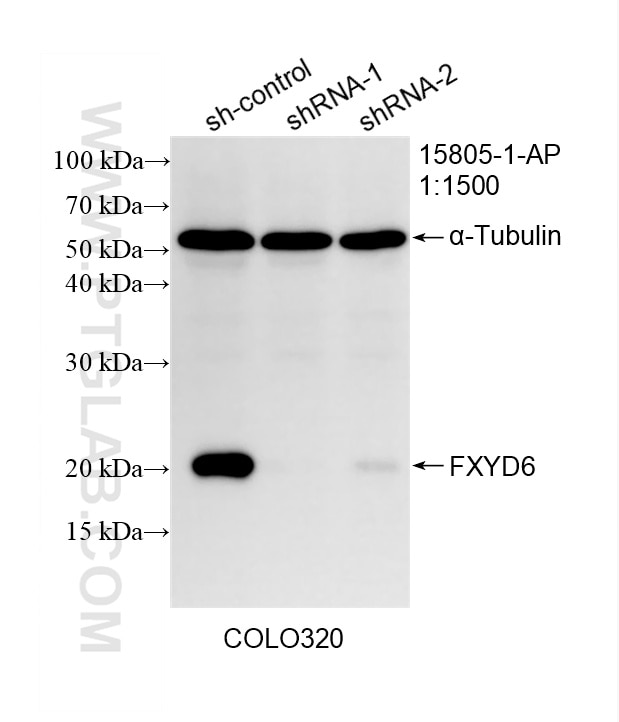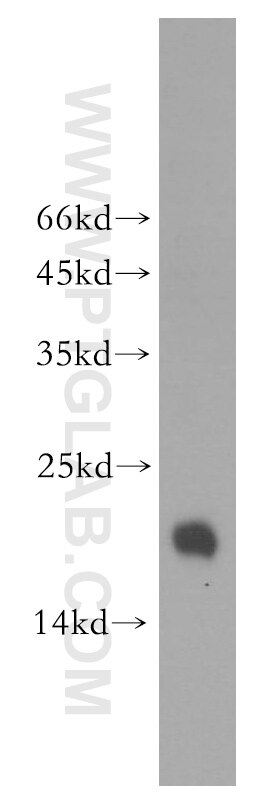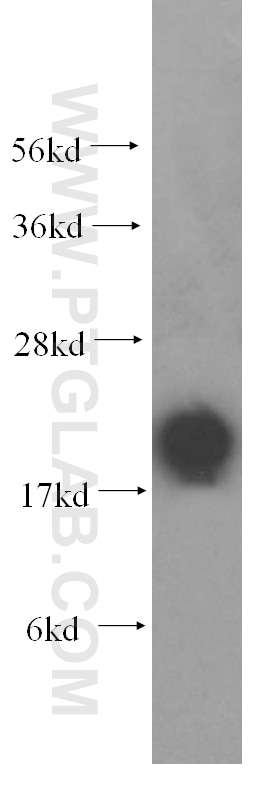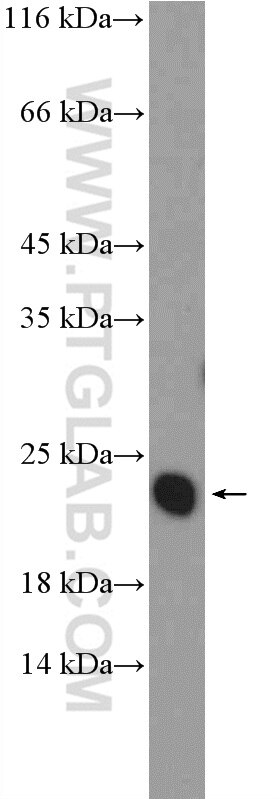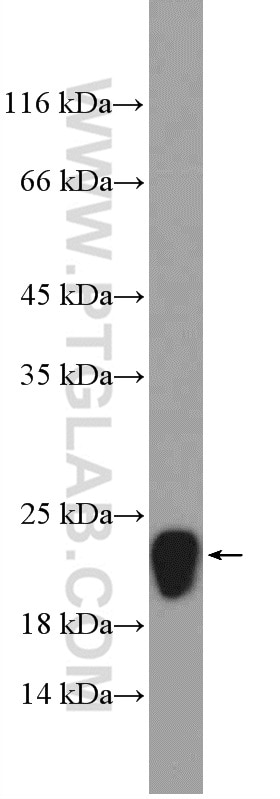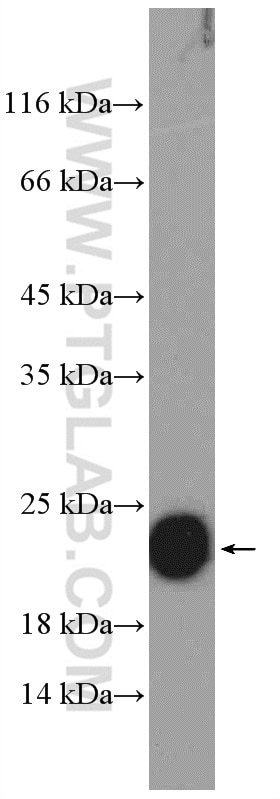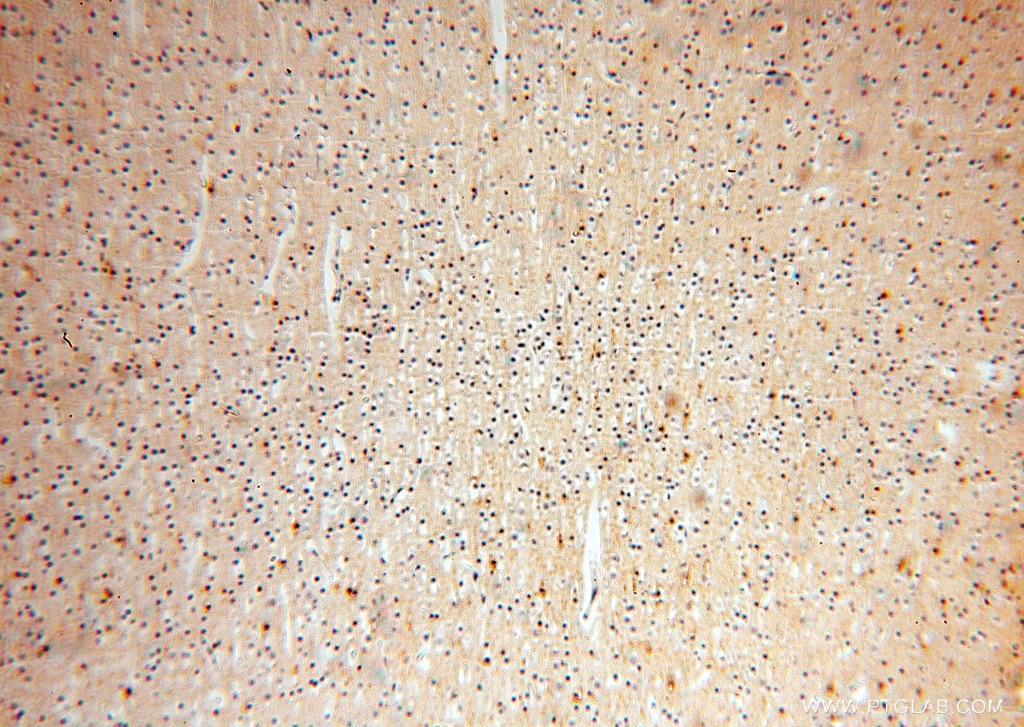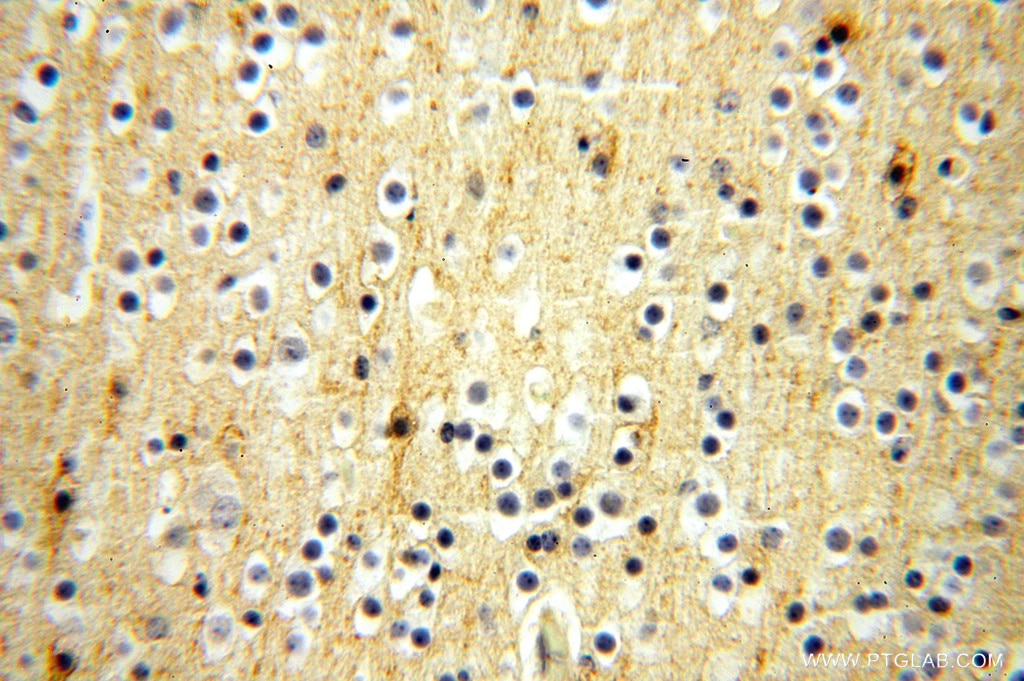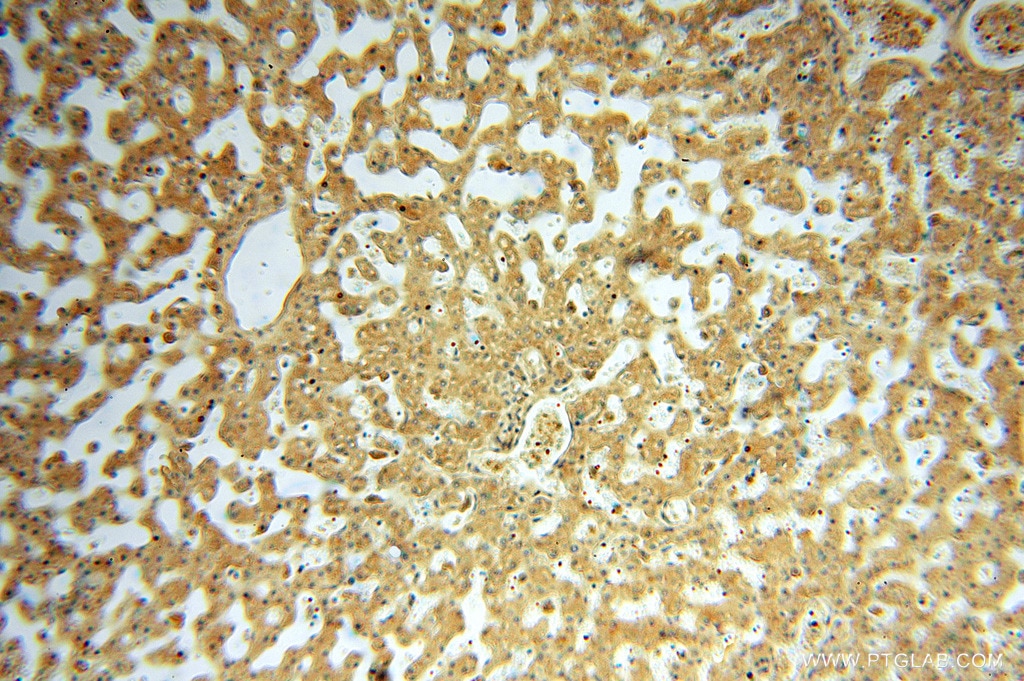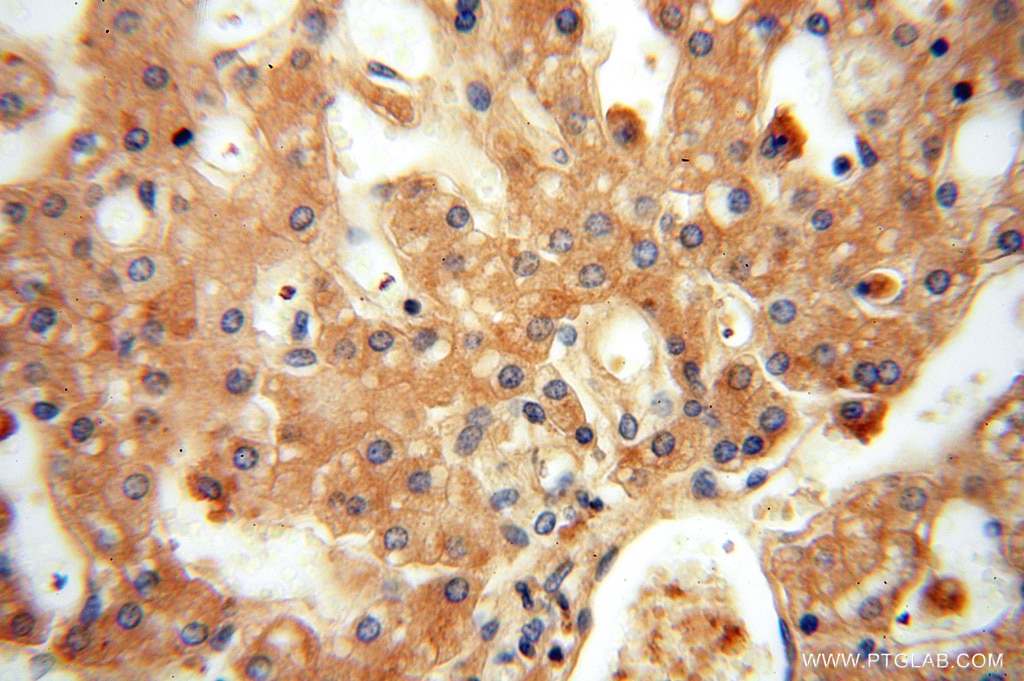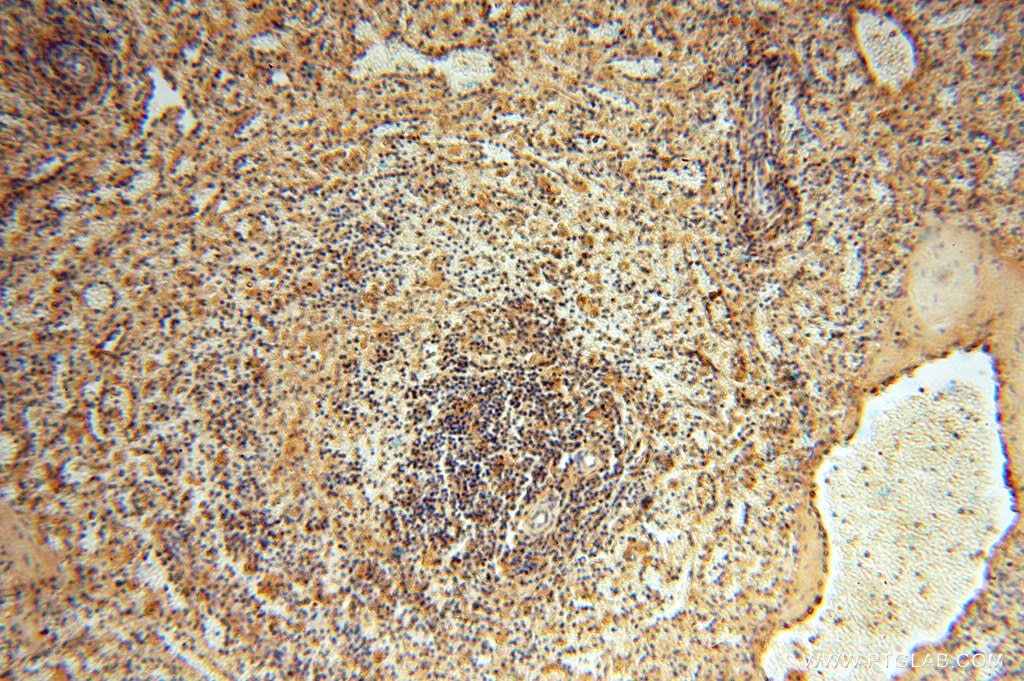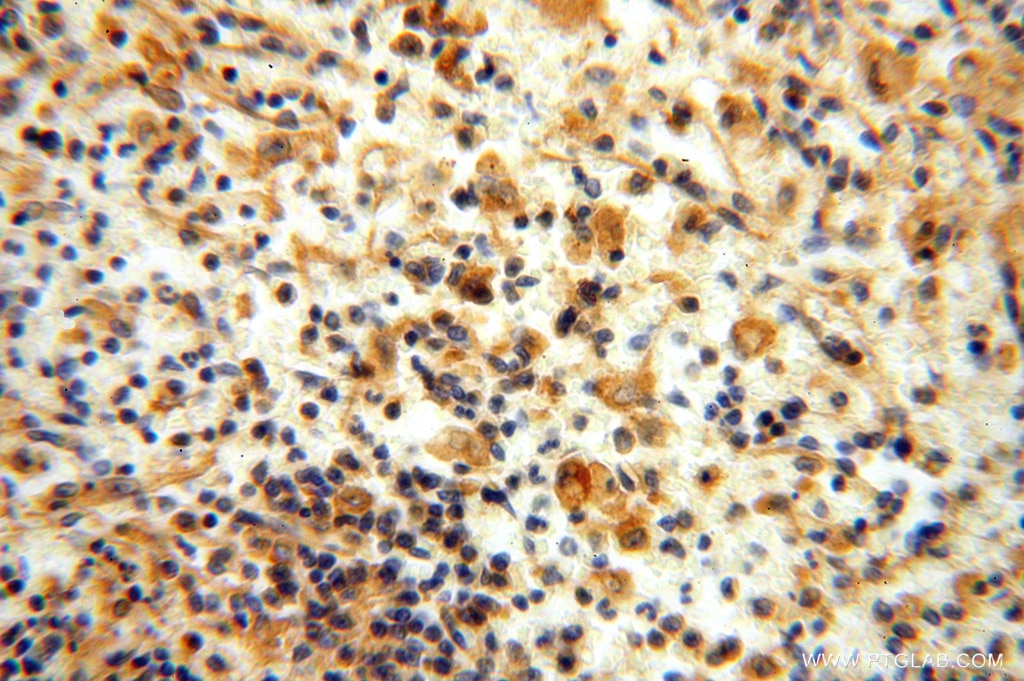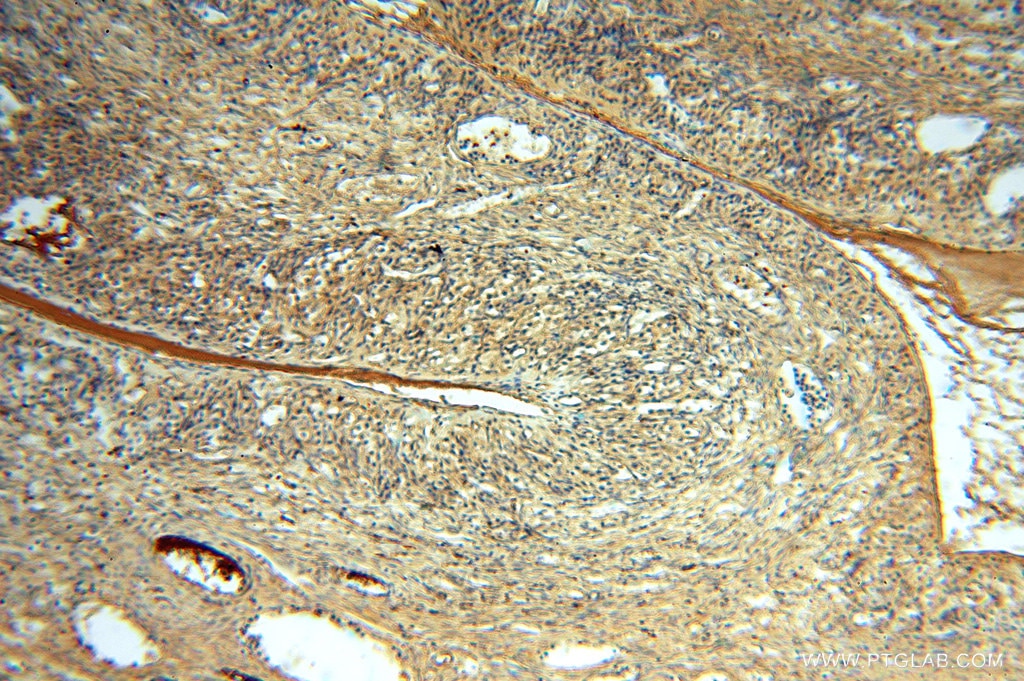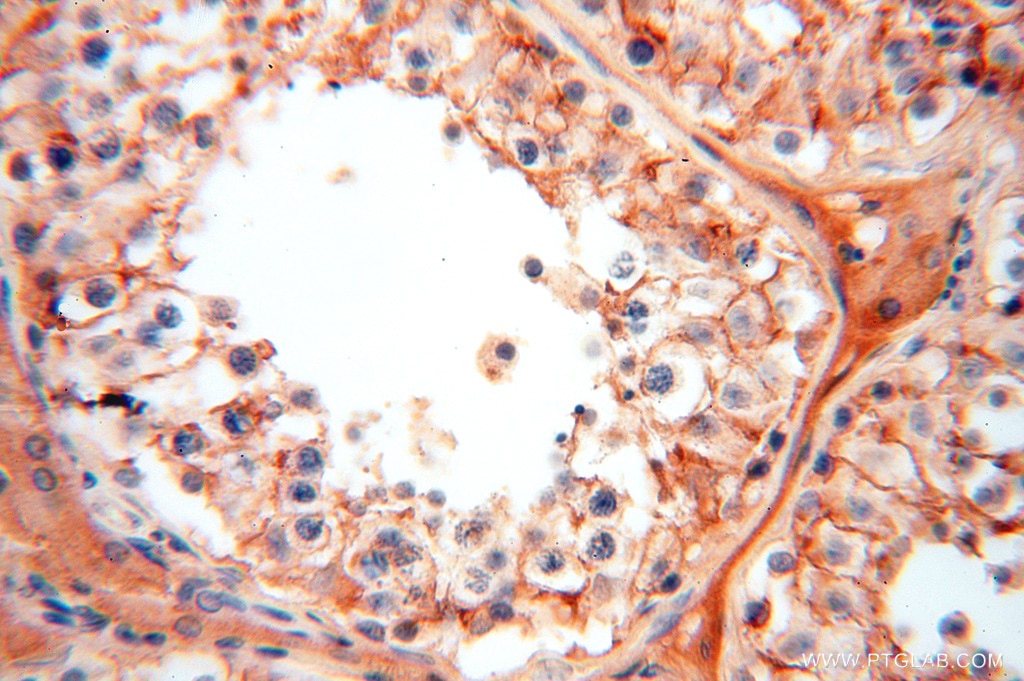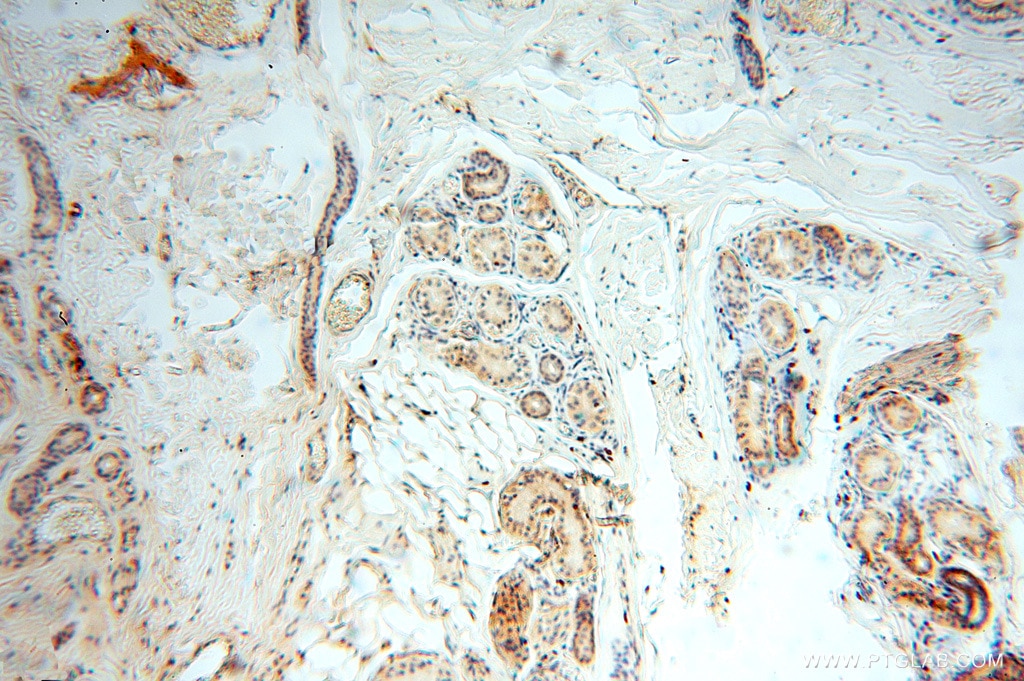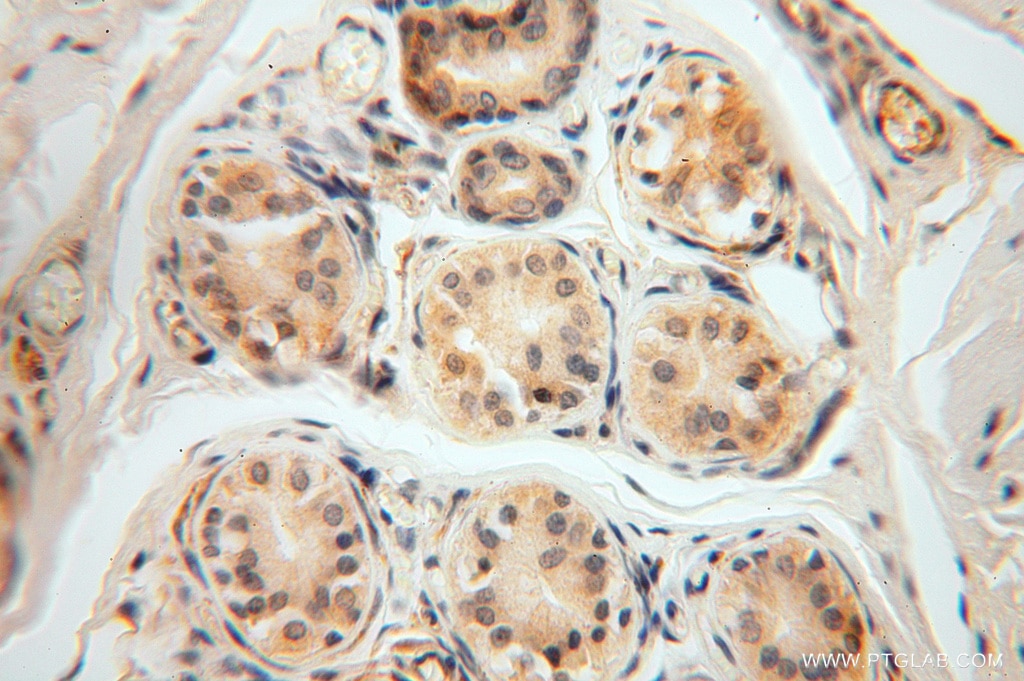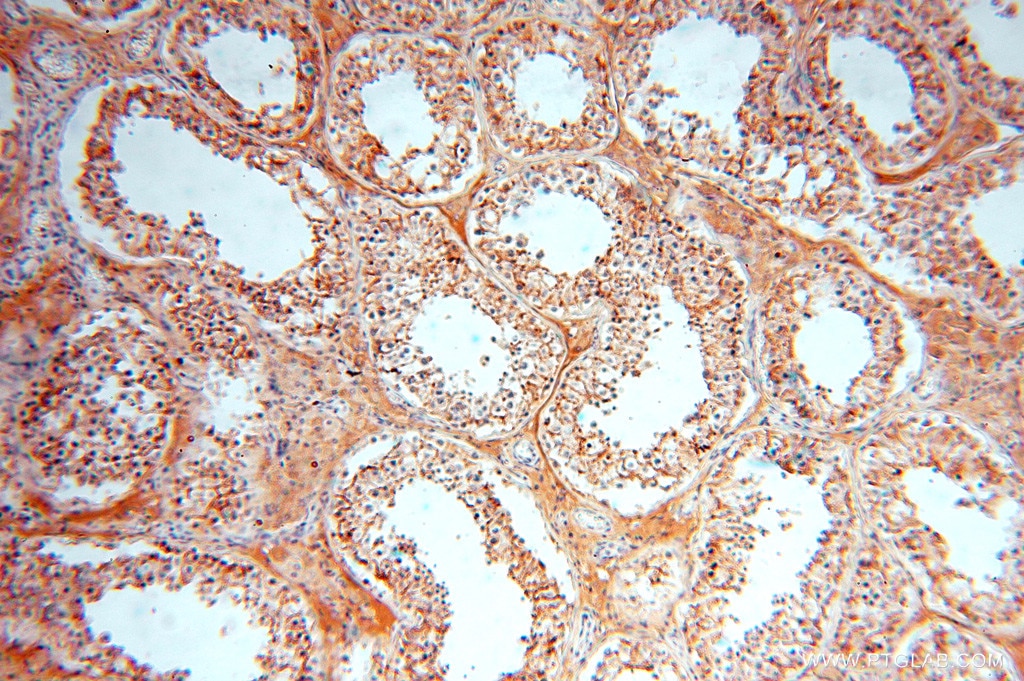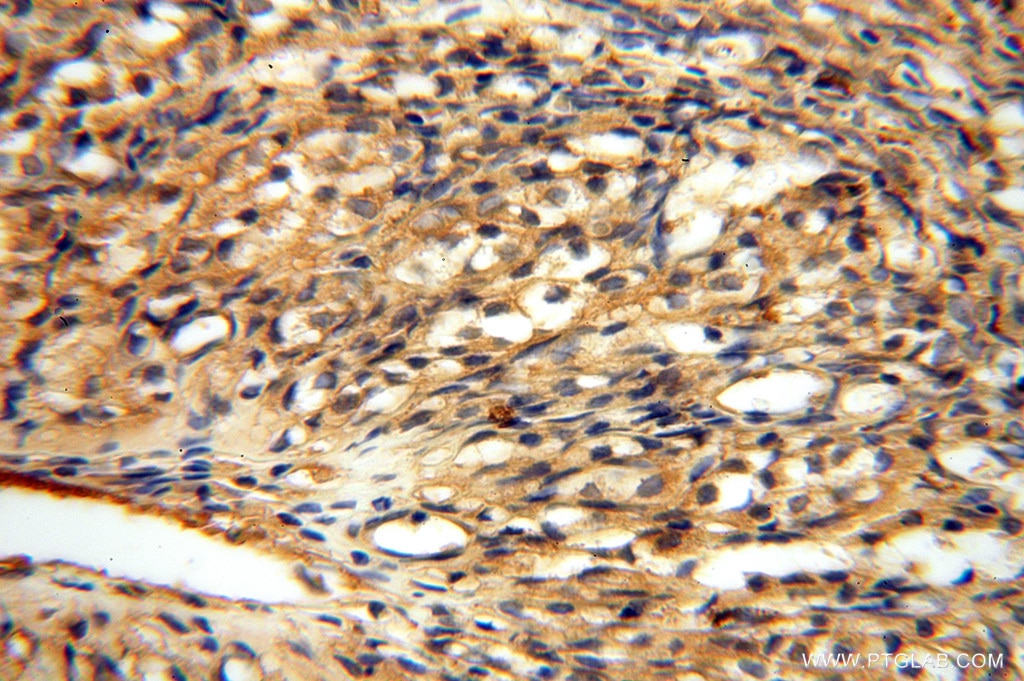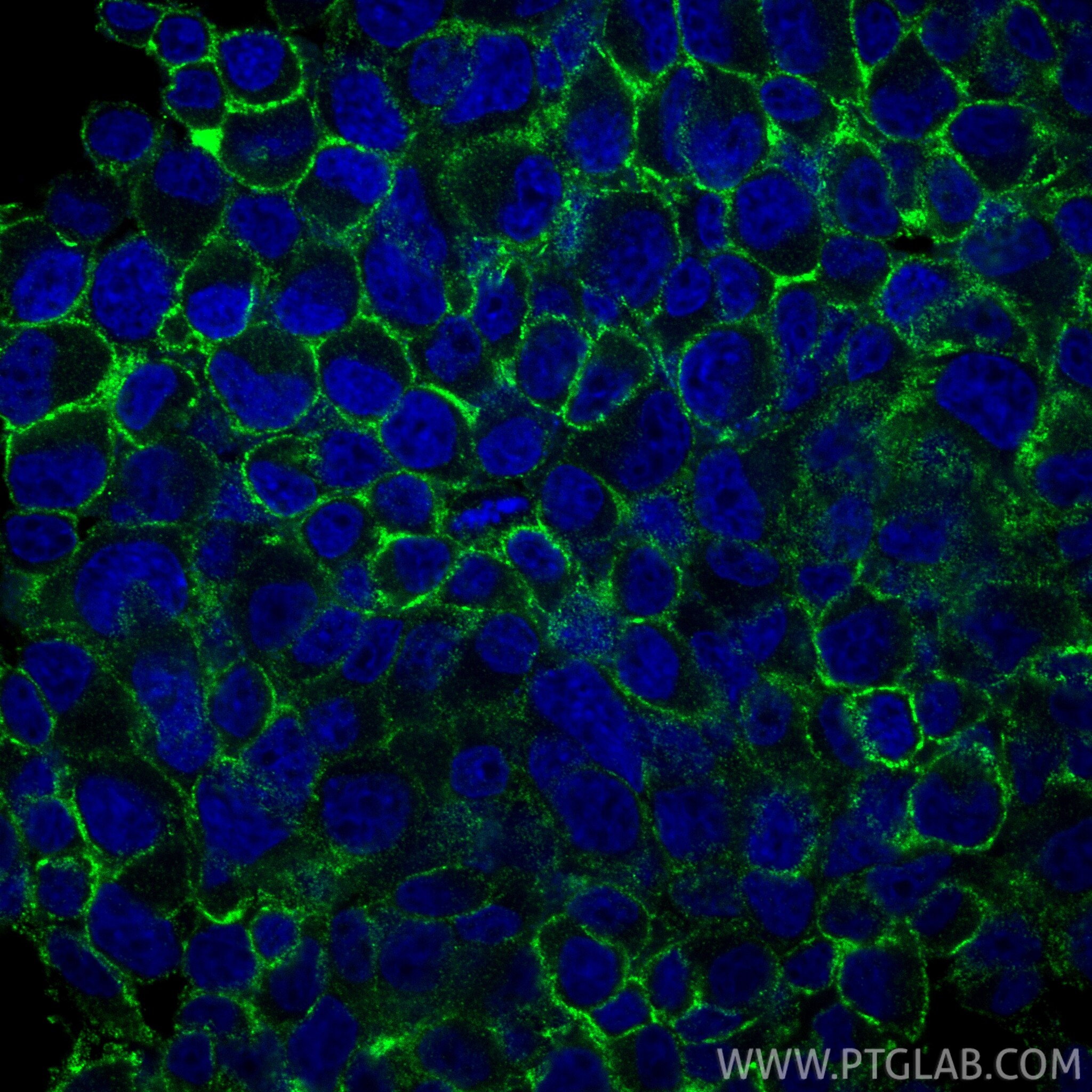Validation Data Gallery
Tested Applications
| Positive WB detected in | PC-12 cells, mouse brain tissue, human brain tissue, human testis tissue, rat brain tissue, SH-SY5Y cells |
| Positive IHC detected in | human brain tissue, human liver tissue, human ovary tissue, human skin tissue, human spleen tissue, human testis tissue Note: suggested antigen retrieval with TE buffer pH 9.0; (*) Alternatively, antigen retrieval may be performed with citrate buffer pH 6.0 |
| Positive IF/ICC detected in | PC-12 cells |
Recommended dilution
| Application | Dilution |
|---|---|
| Western Blot (WB) | WB : 1:500-1:3000 |
| Immunohistochemistry (IHC) | IHC : 1:20-1:200 |
| Immunofluorescence (IF)/ICC | IF/ICC : 1:50-1:500 |
| It is recommended that this reagent should be titrated in each testing system to obtain optimal results. | |
| Sample-dependent, Check data in validation data gallery. | |
Published Applications
| KD/KO | See 1 publications below |
| WB | See 3 publications below |
| IF | See 2 publications below |
Product Information
15805-1-AP targets FXYD6 in WB, IHC, IF/ICC, ELISA applications and shows reactivity with human, mouse, rat samples.
| Tested Reactivity | human, mouse, rat |
| Cited Reactivity | human, mouse |
| Host / Isotype | Rabbit / IgG |
| Class | Polyclonal |
| Type | Antibody |
| Immunogen |
CatNo: Ag8538 Product name: Recombinant human FXYD6 protein Source: e coli.-derived, PGEX-4T Tag: GST Domain: 23-95 aa of BC018652 Sequence: KEKEMDPFHYDYQTLRIGGLVFAVVLFSVGILLILSRRCKCSFNQKPRAPGDEEAQVENLITANATEPQKAEN 相同性解析による交差性が予測される生物種 |
| Full Name | FXYD domain containing ion transport regulator 6 |
| Calculated molecular weight | 95 aa, 11 kDa |
| Observed molecular weight | 20 kDa |
| GenBank accession number | BC018652 |
| Gene Symbol | FXYD6 |
| Gene ID (NCBI) | 53826 |
| RRID | AB_2108625 |
| Conjugate | Unconjugated |
| Form | |
| Form | Liquid |
| Purification Method | Antigen affinity purification |
| UNIPROT ID | Q9H0Q3 |
| Storage Buffer | PBS with 0.02% sodium azide and 50% glycerol{{ptg:BufferTemp}}7.3 |
| Storage Conditions | Store at -20°C. Stable for one year after shipment. Aliquoting is unnecessary for -20oC storage. |
Background Information
The FXYD family is a group of small single-span transmembrane proteins characterized by a signature sequence containing an FXYD motif, two conserved glycines and a serine residue. Members of the FXYD family, including FXYD1 (phospholemman), FXYD2 (gamma subunit of Na,K-ATPase), FXYD3 (Mat8), FXYD4 (CHIF), FXYD5 (RIC), FXYD6 (phosphohippolin) and FXYD7, are tissue specific regulators of the Na,K-ATPase. FXYD6 is primarily expressed in the brain. It modulates the kinetic activity of Na,K-ATPase and has long-term physiological importance in maintaining cation homeostasis. It may play a role in endolymph composition and has a potential important role in neuronal excitability of the CNS during postnatal development and in the adult brain. On the SDS-PAGE FXYD6 migrates with an apparent molecular weight of approximately 20 kDa, which is larger than the calculated molecular weight of 10.5 kDa (PMID: 15193427; 17209044). The gene encodes FXYD6 is located on chromosome 11q23.3, and it might be a susceptibility gene of schizophrenia.
Protocols
| Product Specific Protocols | |
|---|---|
| IHC protocol for FXYD6 antibody 15805-1-AP | Download protocol |
| WB protocol for FXYD6 antibody 15805-1-AP | Download protocol |
| Standard Protocols | |
|---|---|
| Click here to view our Standard Protocols |
Publications
| Species | Application | Title |
|---|---|---|
J Am Soc Nephrol Single-Cell RNA Sequencing Reveals Renal Endothelium Heterogeneity and Metabolic Adaptation to Water Deprivation. | ||
Cancer Med Identification of FXYD6 as the novel biomarker for glioma based on differential expression and DNA methylation | ||
Biomed Res Int FXYD6 Regulates Chemosensitivity by Mediating the Expression of Na+/K+-ATPase α1 and Affecting Cell Autophagy and Apoptosis in Colorectal Cancer.
| ||
Front Immunol Identification of prognostic subtypes and the role of FXYD6 in ovarian cancer through multi-omics clustering |

